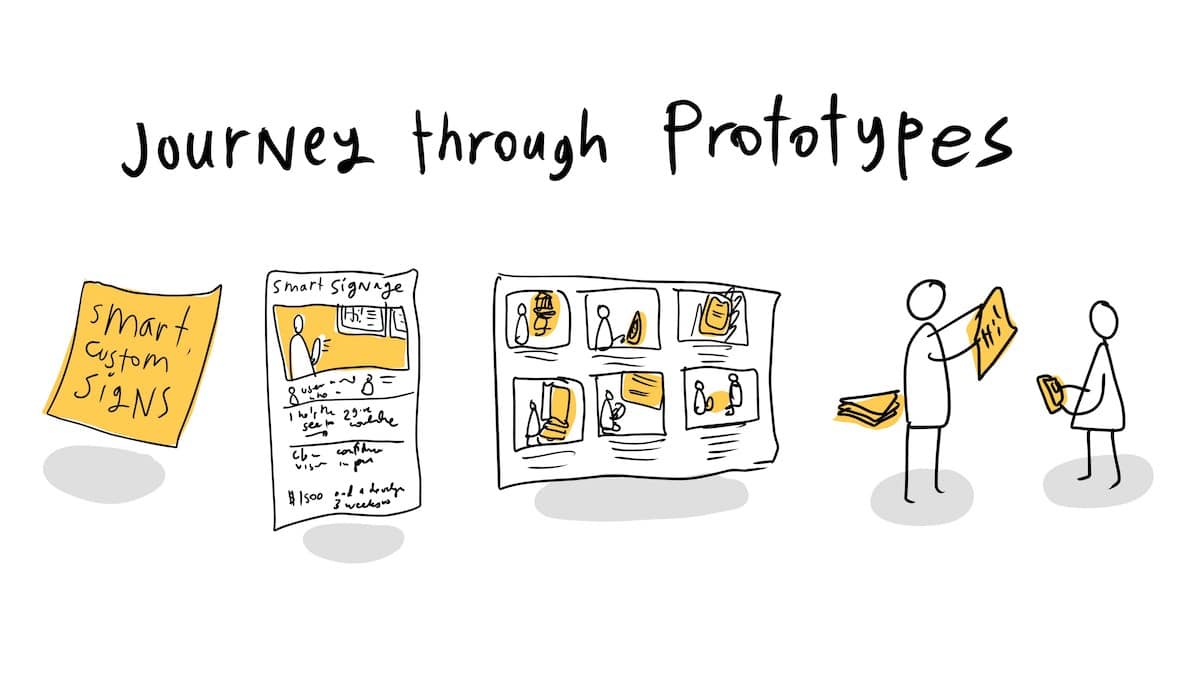Prototyping is the process of building a model of a system. It can also be defined as the initial stage of a software release where product fixes and developmental evolution are done before the actual product initiation.
Some of the best prototyping software that UX designers can use include: InVision, Justinmind, Marvel, Balsamiq, Adobe XD, etc.
Stages of Prototyping
Most of the prototypes go through five stages which include:
1. Defining
At this stage, the developer needs to develop a vision for their project. The product they are to develop should answer a few questions like what problem is being solved, the key market, other available options in the market, the anticipated price point, the materials, and the labor to be used.
Answering these questions will determine whether the product will be useful or if the cost of production will be justifiable.
2. Focusing On Features
Developers should always single out one or two key features of their products to focus on their prototype rather than making the prototypes identical to the products.
3. Production
The production process is the lengthiest part of the process. Some prototyping methods include: CNC machining, 3D printing, power bed infusions, and mold making and casting.
4. Testing
After the initial rollout, the developer will evaluate it, consider update options and seek ways to improve the overall prototype. This could involve making simple tweaks or scrapping the whole thing and starting from step one.
5. Presenting
This stage differs from prototype to prototype because not all of them are the same. This stage may include: creating multiple models for testing among consumers, sending the design in for patenting, or showing it to potential investors.
Advantages of Prototyping
These are some of the advantages of prototyping.
Enhanced Collaboration Within Internal Team Members
Prototyping can improve efficiency significantly. Different developers can come together to make sure that the prototype works well. Enhanced collaboration increases the success of the prototype.
Detection of Errors Early
Mistakes found early in the prototype stage will save you a lot of time and money, rather than when the same mistakes are discovered at the development stage.
Improved Communication With Stockholders, Boss and Users
Chances of the users, boss, and stockholders buying into the prototype is higher because communication was kept open from the beginning, which means they fully understand the design.
Providing Functionality and Interaction
Prototyping can efficiently provide interaction and functionality.
Involved User Feedback
When users are involved in providing feedback and doing multiple tests, they are the key factor to making any necessary updates.
Disadvantages of Prototyping
These are some disadvantages of prototyping.
Misunderstanding of Prototype and Finished System of Users
For high-fidelity design, the user may have a limited thought cause they feel like this is how an app works, so they can’t give useful feedback.
Ignoring Feasibility
Sometimes your prototype won’t work in the development stage. This may not be apparent at the development stage
Client May Demand the Product After Seeing the Prototype
If your prototype is satisfactory, the client is more than likely to ask for the product at the development stage.
Clients May Be Dissatisfied After Seeing the Prototype
If the client is not happy with your prototype, they will likely stop the development of the actual product.
This Model Is Costly
Creating the prototype before the actual product might be costly in the long run because you will essentially be doing the same job twice.
Having good prototyping is an excellent way to gauge the quality and functionality of the final product. Understanding the advantages and disadvantages will make your prototyping successful because you fully understand the dos and don’ts.

